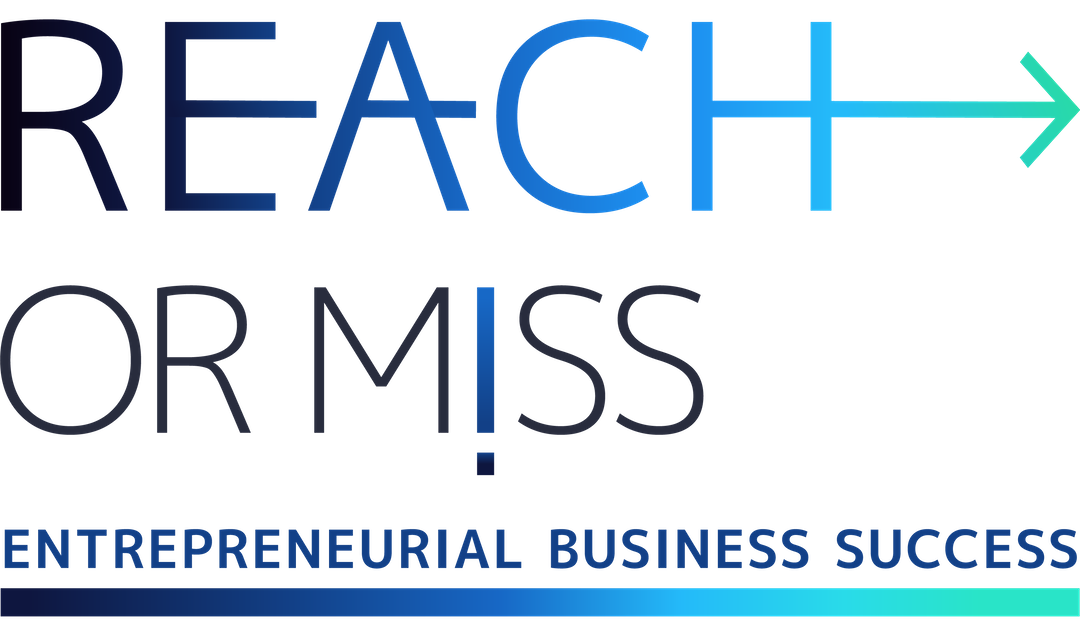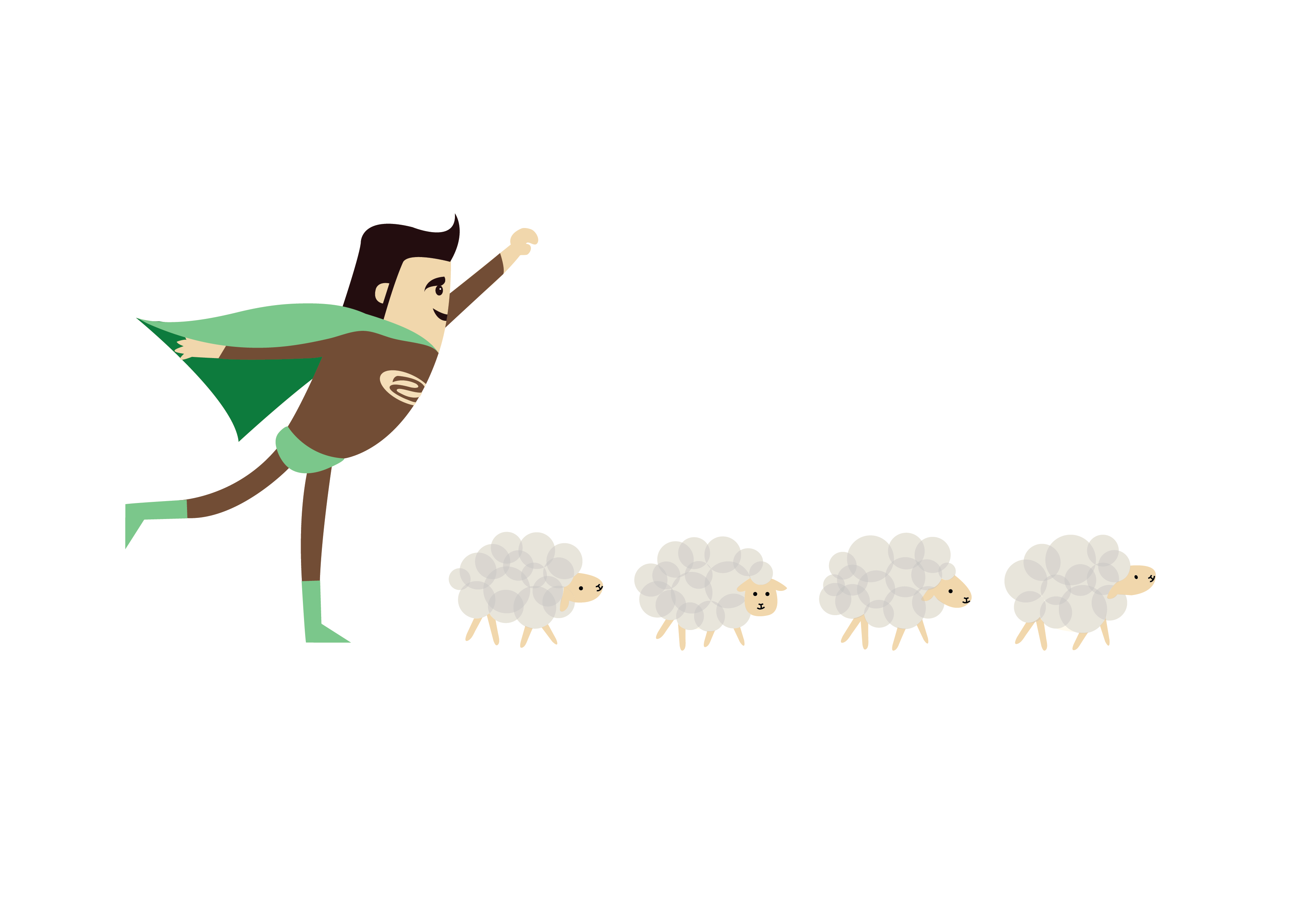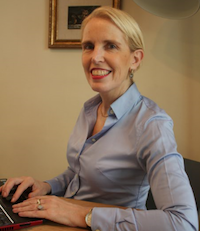Ep. 180 – Entrepreneurial Marketing Success – The 3 successful entrepreneurs that affected you most
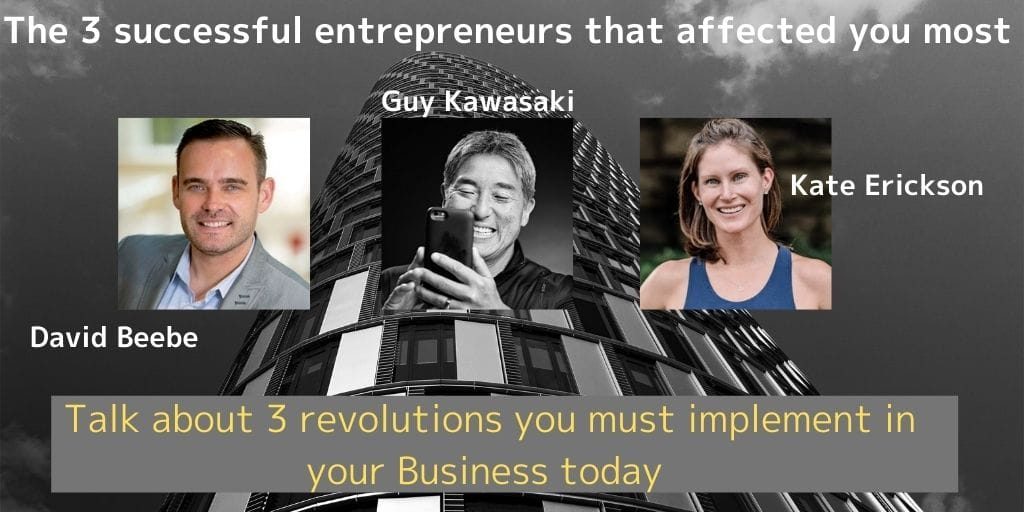
Guy Kawasaki, David Beebe and Kate Erickson talk about three revolutions you must implement in your Business today:
- ✓ The ‘customers who are fans’ revolution
- ✓ The social media revolution, and
- ✓ The broadcast revolution
Hi, entrepreneurs reachers.
How are you? We are at the end of the summer. Probably the strangest summer most of us ever went through; the world has changed. Dramatically. The scary thing is that we don’t know what the new world is going to look like. Everything is still shifting; what I do know that this is the best opportunity for entrepreneurs to take the time and make their entrepreneurship the business they want to have.
And I want to help you at this uncertain time. So I went to look for the entrepreneurs that affected you most by analyzing which entrepreneurs you chose to listen to most and what they stand for.
These are the results:
The first entrepreneur that most of you chose to listen to is Guy Kawasaki.
Guy Kawasaki was Apple’s Chief Evangelist, and today is the Chief evangelist of Canva. Guy’s approach to customers represents the biggest marketing revolution: The ‘customers who are fans’ revolution. That’s what marketing gurus like Mark Schaefer and David Meerman Scott (both were the firsts to understand the huge effect of the social media and content revolution) write about today:
Mark Schaefer wrote in his last book Marketing Rebellion about “The most human company wins,” and David Meerman Scott and Reiko Scott wrote in their excellent book Fanocracy – about turning fans into customers and customers into fans.
Let’s listen to the main parts of my interview with Guy Kawasaki:
The ‘customers who are fans’ revolution
Guy Kawasaki
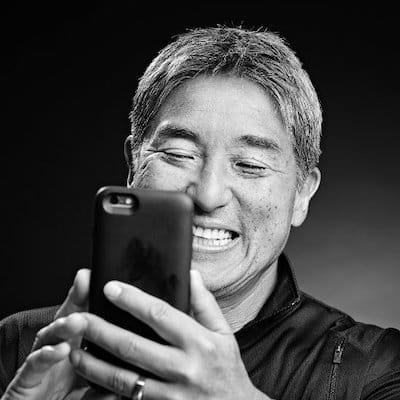
Guy Kawasaki is the chief evangelist of Canva, an online graphic design tool. He is a brand ambassador for Mercedes-Benz and an executive fellow of the Haas School of Business (UC Berkeley). He was the chief evangelist of Apple and a trustee of the Wikimedia Foundation. He is also the author of The Art of the Start 2.0, The Art of Social Media, Enchantment, and nine other books. Kawasaki has a BA from Stanford University and an MBA from UCLA as well as an honorary doctorate from Babson College.
Guy’s Career
- My career really started in the jewelry business, not tech. I started a part-time job when I had my MBA at UCLA. I worked for a jewelry manufacture in downtown LA. It was a small manufacturing company owned by a Jewish family, and that’s where I learned sales and marketing. I worked there for about six years. I have a deep understanding and love for many Jewish things.
- I was in the jewelry business, and then I got an Apple 2, and I fell in love with computers.
- I worked for 6 months for a small software company that was acquired, and my roommate eventually hired me into Apple. I went to work for Apple as an evangelist, I left to start a company, and later returned to apple as Apple chief evangelist, and yet again left to start a company… Basically; I’ve been in Apple twice, and I’ve been an entrepreneur, speaker, and author since then.
Customers
- My target audience for Canva is anyone who wants to make a design, so this means anybody in the world… We try to democratize design so anybody can create beautiful designs. That’s a few billion people… I hope people realize how necessary it is to use design as an element of your communications because it helps you stand out.
- From the very start, the goal was to empower people. Just like when I went to work for Apple, the goal for Apple was not to make a business computer but to make a computer that anyone could use. The same thing is true for Canva; it’s not a tool that we make only for graphic professionals. It’s for anyone who wants to create graphics.
Biggest failure with customers
- With Apple when we introduced Macintosh it went through a very rough period for many reasons. So you could also look at this as a failure.
- Very few companies get it exactly right at the start. It’s less important where you start as much as how fast you can change from where you start.
- The best case is a pretty good prototype that you can change fast.
Biggest success due to the right customer approach
- I started at Canva when they were two years old. I think that from the get-go, they had a very good prototype. They truly understood the need of people, and Canva was growing like a rocket. I’m not taking credit for that; the credit belongs to the founders of Canva: Melanie Perkins and Cliff Obrecht.
- This is called Guy’s golden touch. So Guy’s golden touch is not whatever I touch turns to gold, but whatever is gold, Guy touches…
- I’ve learned in my career that it’s better to be lucky than smart.
A person who impact Guy’s “customer focus” success the most
- I learned how to sell and market in the jewelry business, not in the tech business. That came before tech to me.
- At the end of the day, there are only two real functions in business: somebody has to make it, and somebody has to sell it. Suppose you are not an engineer, you better learn how to sell. And if you can’t sell, you better be engineering because everything else is bullshit.
- I learned to sell. I’m not an engineer; I learned to sell in the jewelry business. I learned about trust. In the jewelry business, it’s all about trust.
Guy’s last piece of guidance
- You should never ask people to do something that you would not do. It applies to your customers, employees, vendors, to everybody.
The second entrepreneur you listened to most is David Beebe, who represents the broadcast revolution and talks about “From Hollywood to Brands Marketing it’s the same rule today: Be customer-centric”
The broadcast revolution
David Beebe
Emmy-winning Branded Content Producer, Keynote Speaker, Co-Founder and Content Decoded
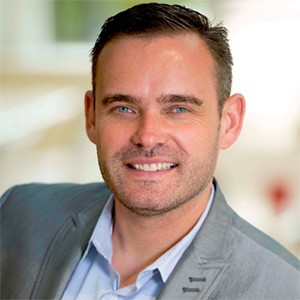
Declared by AdWeek as a “Branded Content Master Who Makes it OK to Love Marketing,” and named by Ad Age as a Top 40 “forward thinker, risk-taker, and rainmaker in marketing,” Emmy-award and Cannes Lions winner David Beebe, who founded and led the Disney/ABC Television Group Content Studio and Marriott Content Studio, and produced branded content for Grey’s Anatomy, Desperate Housewives, Ugly Betty, LOST, Scrubs and original series for Showtime, DIRECTV, Yahoo, and PBS is one of the entertainment and marketing industries most influential producers, brand storytellers, marketers, advisors, and keynote speakers with real world experience.
David’s career and what he is most passionate about today
- I spent my career in Hollywood storytelling and brand marketing, and I’m passionate about working with brands and helping them really transform marketing into an organization and a strategy that helps win the hearts, minds, and wallets of next-generation consumers with content marketing, branded content or premium story-like content.
- That’s what consumers really want today. They don’t engage with interactive marketing anymore, and marketers really need to provide value. That’s what I’m in right now. It’s fun to work with brands to create stories and create platforms that engaged consumers globally.
- Storytelling has been a part of my life from the beginning. Working with corporations with marketing or with the content creation units in there, and working in TV for 15 years producing television shows like Grey’s Anatomy, Ugly Betty, LOST, producing all the derivative content, webisodes, and behind the scenes, that’s storytelling, and that’s what consumers are watching. You go to the brand side, and you apply that thinking of ‘think like a publisher,’ ‘think and act like a media company’ because consumers want content. They don’t care where it comes from; they don’t care who produces it, as long as it is entertaining and informative, and it’s valuable, it’s totally fine if it is from a brand. In fact, they understand that brands need to advertise and need to market, but they appreciate when the content provides value to them first versus pitching them features and benefits.
- Traditional marketing is pitching features and benefits, but it’s interruptive in nature. It interrupts what the consumers are doing. It comes in the form of TV commercials, banner ads, or interruptive emails. It’s not delivered at the right time and in the right place. You can still deliver content but deliver content that provides value first and entertains and informs the consumer versus interrupting them.
- Content marketing and brand storytelling should be connected to all the other types of marketing. It’s not the only type of marketing, but it should be a big piece of it, and it all works together.
David’s best advice about approaching the customer
- We live in a world today where the customer is king. Your customers, your consumers, now control where, when, and how they are going to interact with your brand. They also control what they think about your brand.
- Brands and companies are not in charge of the message anymore, and it goes back to that experience you provide customers. That is essentially the brand, and that’s what people are going to talk about.
- When we talk about customer experience and customers’ focus, all brands and companies need to think consumers first! How is it benefiting the customers? To make sure it’s not centered on the brand itself, but actually providing value.
- My advice for brands, for companies, for entrepreneurs is you have to shift the thinking to think ‘consumer-first’ in everything you are doing.
- It’s hard for entrepreneurs and business leaders to have the consumers’ perspective, even when they think they do have it. They are designing things from the inside out versus designing from the outside in.
Biggest failure with customers
- There are so many… even with all the success… but that’s how you learn, right? I worked at Disney ABC TV group, and we were preparing to launch original content online. That was the year that YouTube came out, and at that time, and the video was very basic. Although we saw the content there as something that takes away views from our content, we looked at the creators there like ‘they are just kids in their basement, right, what do they really know about creating content? We are the professional producers of content. There is a way to do it, a system.’ So we produced, we ignored them, that’s an example of being very self-centered from a brand perspective and not thinking of what the consumer wants. Looking back, those YouTubers who created content and their channels are very successful. They have mass audiences; some of them have 70 and 80 million subscribers a day, numbers that any network can only dream of. They become content creators, and they have launched businesses of millions of dollars, creating content and merchandise from it, so they became the new media companies. And we ignored them!!!! That’s totally a failure from a customers’ experience.
- The failure is missing out on the opportunity to be involved in YouTube. Look what happened to Blockbuster with the revolution of services like Netflix. Every brand can be in this place today.
Biggest success due to the right customer approach or focus
- I would probably talk about real-time marketing and the content studios, which are Brand Newsrooms. 15-20 people sitting in a big glass box in front of screens, and they are identifying opportunities to engage with the consumer in real-time. The idea is very customer-focused. Marketing is no longer ‘8 to 5, Monday to Friday’… It is always on, consumers are always on, and I think that brands must be there, not only to respond but to create marketing opportunities and to be connected to the conversation in real-time.
- We built five Brand Newsrooms like that around the world with content creators [working] 24 hours a day. Everything is happening at the moment. That’s customer-centric.
Recommendation of a person, like a mentor, or other service provider that impacts you or your customers.
- My favorite book and author and speaker are Simon Sinek, who wrote Start with the WHY.
- That is going back to the consumer first. As a brand, often, everyone knows what you do, but very few would know why you do it. Start with the why; what your purpose and people will connect with your purpose.
- The second book is The Thank You Economy by Gary Vaynerchuk.
- The idea of it is about giving value to the consumer first. “Give, give, give,”… and eventually, you will get back and create a value exchange.
And the third and last guest you were affected by most is Kate Erickson. Kate talks about the social media revolution and about How to use social media to find your Perfect Customer. It seems that the issue of social media is one of the main issues you were concern about. And although this interview was first published three years ago, it’s still one of three questions you ask most.
The social media revolution
Kate Erickson
The social media revolution and about How to use social media to find your perfect Customer
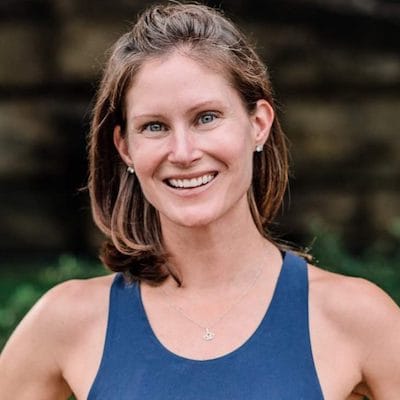
Kate Erickson is a creator, engager and implementer, over at EOFire, a podcast hosted by John Lee Dumas (JLD) that interviews today’s most inspiring and successful entrepreneurs.
She is also the host of Kate’s Take, the EOFire audio blog, and the Author of the FirePath, Beginners’ guide to growing your online business.
Kate is passionate about helping entrepreneurs in creating freedom in their business and life through developing systems and processes that can help their business scale and grow
EOFire’s customers
- EOFire’s perfect customer (avatar) is a mid-age male at a corporate job spending most of his time doing things he doesn’t really love to do
Kate’s best advice about approaching the customer
- You need to do things that DO NOT SCALE. Mainly speaking with a lot of your customers. That’s the only way to understand who your perfect customer is
Kate’s biggest failure with a customer
- Kate takes us back to her days as an account manager in a marketing and advertising agency, standing between the agency and a very angry customer. This case actually helped her understand this wasn’t the place she wanted to be in, and therefore joined John Lee Dumas at EOFire.
One big success due to the right customer approach
- The Freedom Journal’s community. John Lee Dumas and Kate had a great success launching The Freedom Journal – a guide to help people accomplish their number one goal in 100 days. The Freedom Journal community is a platform for likeminded people that come together, help support one another, provide feedback to one another, and help each other accomplish their goal.
- Kate talks about the importance of listening to your customers. This community, for her, is the place to get a clear picture of what the customers need and want
- The Freedom Journal is a stunning, hardcover Journal that will guide you in the accomplishment of your #1 goal in 100 days.
This is the end of our special episode. I hope you enjoyed it and can’t wait to read your feedback and responses, so please, leave us your comments. We love hearing your thoughts.
Next week, we will have a new guest.
I’ll meet you there.
In the meantime, I wish you and all your beloved ones to stay healthy and safe.
Bye…
Best way to connect with our guests:
- Guy Kawasaki
- David Beebe
- DavidBeebe Website
- Kate Erickson
- To reach Kate, Go to EOFire.com and contact Team Fire!
More resources for Entrepreneurs
- Don’t Miss – Customer Focus Strategy & Execution: Market Analysis for Fundraising
- Hayut Yogev’s Latest post: Is the magic that helped entrepreneurs like Jeff Bullas (570K Twitter followers) or Douglas Burdett become leading successful influencers happening again?
- Former interview: Climbing mountains and entrepreneurial success – The 6th and newest part – Some of the most amazing mountains’ stories you heard
